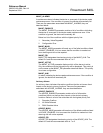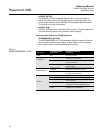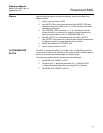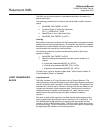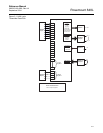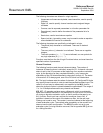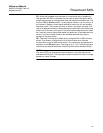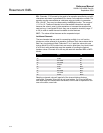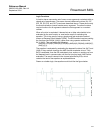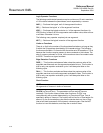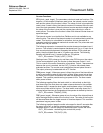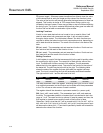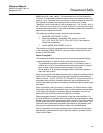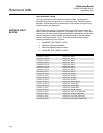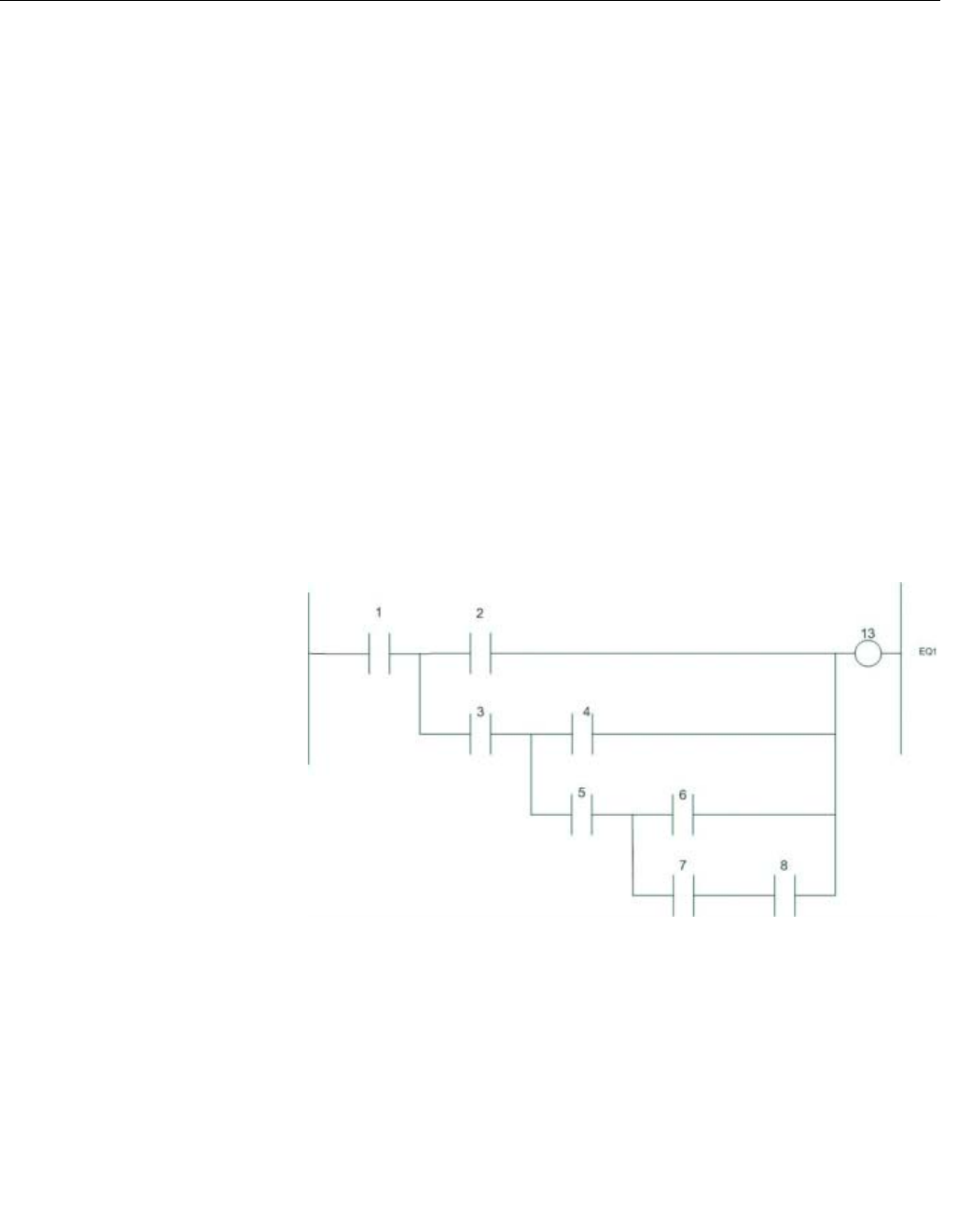
Reference Manual
00809-0100-4696, Rev AA
September 2004
3-15
Rosemount 848L
Logic Functions
A function has a name and a set of one or more arguments contained within a
closed set of parentheses. The seven channel reference functions (IN, ICF,
ICR, PS, DO, EQ, and OUT) have been described above. These are the only
functions that take a channel number as an argument. The other functions
require functions for all arguments unless the last argument is a constant
number.
When a function is evaluated, it leaves its true or false value behind to be
evaluated by the next function or used as the result of evaluating the
equation. This is the result of using a simple and fast evaluation method
known as Reverse Polish Notation (RPN). The RPN method requires nesting
the functions like OR(IN(1),IN(2)) rather than using operator notation like
IN(1) | IN(2). This can lead to the following:
AND(IN(1),OR(IN(2),AND(IN(3),OR(IN(4),AND(IN(5),OR(IN(6),AND(IN(7),
(IN(8))))))));
The equation is evaluated by evaluating the deepest functions first, IN(7) and
(IN(8). If they are both true then the AND function evaluates to true. Then
IN(6) is evaluated, then the OR evaluates to true, and so on working up from
the deepest level in reverse order until the first (and top level) AND can be
evaluated. The result is stored in the channel specified by EQx, which
contains the text of the equation as explained above.
Drawn as a ladder logic, the equation would look like the figure below:
848L/LOGIC_FUNC_EXAMPLE.JPG



